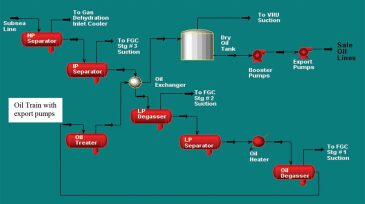machine learning
-
An AI-based application enabled operators to preempt ESP failures while optimizing production.
-
Artificial intelligence systems can be trained to recognize visual content in drawings and provide a simplified context. The complete paper highlights the use of AI to process a scanned drawing and redrawing it on a digital platform.
-
Time-stamped data anomalies can lead to more-accurate identification and faster diagnosis.
-
This paper presents a fatigue-prediction methodology designed to extend the life of unbonded flexible risers and improve the accuracy of floating production, storage, and offloading vessel response analysis.
-
This paper describes an automated work flow that uses sensor data and machine-learning (ML) algorithms to predict and identify root causes of impending and unplanned shutdown events and provide actionable insights.
-
Increasing accuracy in models is often obtained through the first steps of data transformations. This guide explains the difference between the key feature-scaling methods of standardization and normalization and demonstrates when and how to apply each approach.
-
There is often an assumption that big data, together with machine learning, will solve whatever problems asset-heavy industries such as oil and gas face. This is not the case; big data alone isn’t enough. We need something else to solve these problems, and the answer lies in the world of physics.
-
In this paper, the authors introduce a new technology installed permanently on the well completion and addressed to real-time reservoir fluid mapping through time-lapse electromagnetic tomography during production or injection.
-
This paper discusses a prescriptive analytics framework to optimize completions in the Permian Basin.
-
MIT Professor Aleksander Madry strives to build machine-learning models that are more reliable, understandable, and robust.










